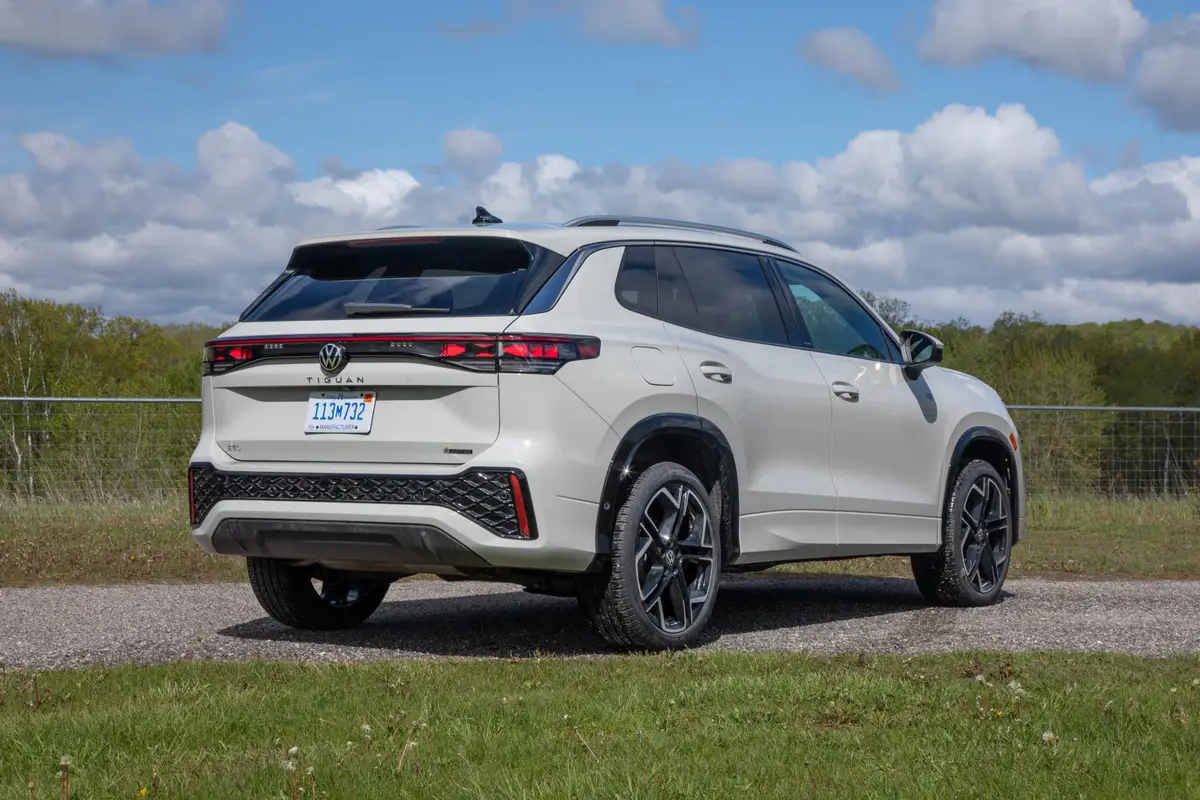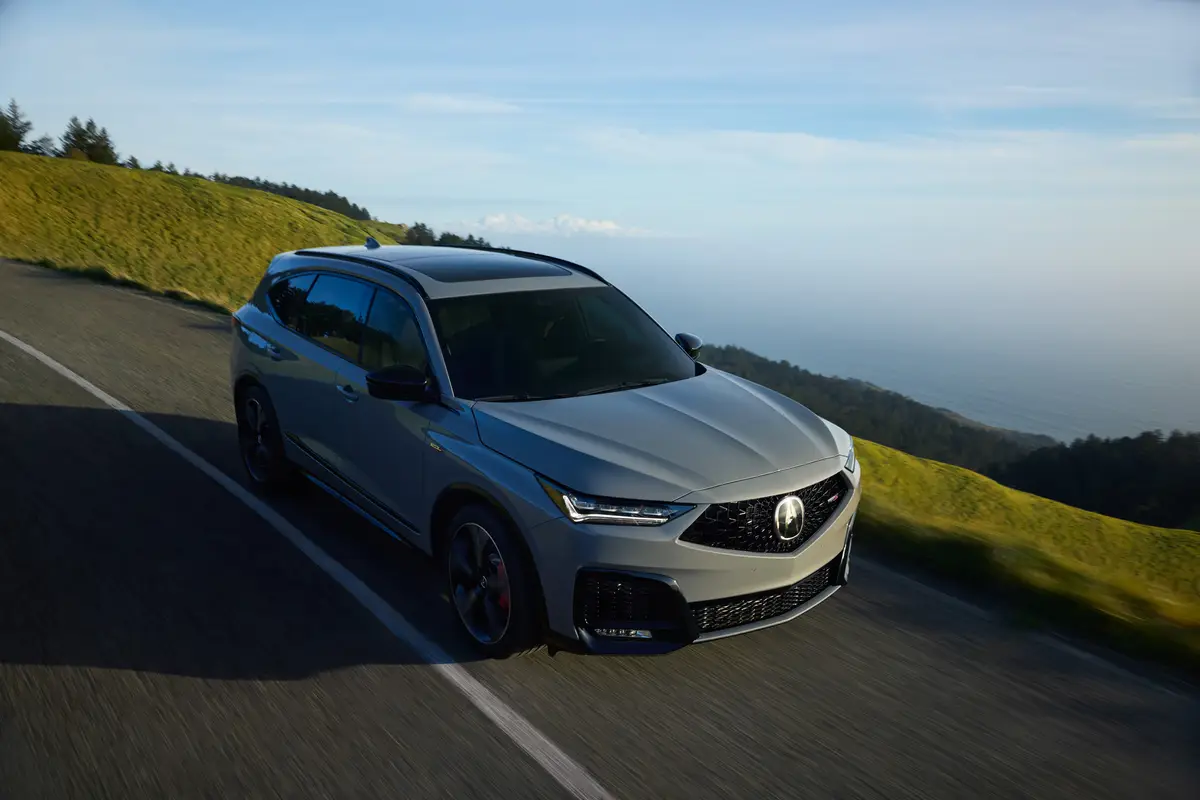chicagotribune.com's view
In cars, as in life, there are the haves and the have nots.
The 1995 Mustang Cobra R is a car for the haves, though when it comes to equipment, it comes with a lengthy list of have nots.
For the distinction of being one of only 232 people on this planet with a $37,599 R version of a regular $21,300 Mustang Cobra coupe, you’ll have to do without air conditioning, radio, power windows, power locks, underhood light, sound insulation, fog lights and a back seat.
Sounds like a ’70s economy car, not a ’90s performance monster breathing 300 horsepower and, when you jam the accelerator into the firewall, enough torque to slap your designer jeans firmly into the bucket while the nose-yours and the car’s-points heavenward.
The goodies were lost in the interest of speed. Shed pounds to boost performance. The Cobra R was designed to race, not idle in rush hour.
It is the product of Ford Motor Co.’s SVT, or Special Vehicle Team, the in-house group charged with making the automaker’s conservative coupes and sedans scream. Their goal was to come up with a Mustang to take on the Chevrolet Camaro Z28 on the race track, where Camaros have been known to blow the bumpers off Fords.
Only 250 Cobra Rs were built, and only 232 have been sold to the public. The rest stay in the hands of Ford to play with or to lend to the nation’s automotive press fleet, meaning at least 18 “Rs” are undergoing more abuse than a $37,599 SVT work of art deserves.
The R is powered by a 5.8-liter, 300-h.p., V-8 rather than the 5-liter, 215-h.p., V-8 in the Mustang GT or 5-liter, 240-h.p., V-8 in the regular Cobra. The Camaro Z28 is powered by a 5.7-liter, 275-h.p., V-8. In non-metric terms, you have Ford competing for bragging rights with its old 351-cubic-inch (5.8-liter) V-8 against Chevy’s old 350-cubic-inch (5.7-liter) V-8.
Teamed with a 5-speed manual, along with pavement grabbing, 17-inch, Z-rated (performance tires rated for speed) tires and a sports tuned suspension, the R is the fastest thing on wheels built by Ford.
It is not, however, a $55,000, 400-h.p., V-10 Dodge Viper or a $37,000 300-h.p., V-8 Chevy Corvette, neither of which have a back seat but the former offering far better styling, the latter offering all the power yet all the amenities, such as air conditioning, radio, power windows, power locks and sound insulation.
Cobra R is a clever public relations tool from Ford, a vehicle available to only 232 customers but one that has made the covers of more magazines than Judge Lance Ito. The R is a “look what we can do when we put our minds to it” car from Ford, an image-builder, just like the Taurus SHO or Thunderbird Super Coupe-or the Viper or Corvette, for that matter.
It’s a car that lets engineers and stylists know life exists beyond fitting dual air bags in Escorts.
It’s also a car that serves notice that a more civilized high-performance Mustang is coming. The Cobra R is merely an appetizer. A higher-performance, but more fuel-efficient version of Ford’s 4.6-liter, V-8 family soon will be in a Mustang that won’t be stripped.
To ensure the Cobra R made the racing circuit, Ford came up with the idea of selling it only to qualified, competitive racing-licensed members of the SCCA (Sports Car Club of America), IMSA (International Motor Sports Association), NHRA (National Hot Rod Association) or IHRA (International Hot Rod Association) fraternity. Those belonging to AA, AAA, NRA, NCAA or PTA need not apply. Buyers had to promise to run the car only on the track and not on the street, though the car meets all safety and emission regulations.
“We tried to put up a hurdle to prevent speculators and collectors from buying them up and storing them. We want them out on the track,” a Ford source said, because each Cobra R in a race is a four-wheel billboard for Fo d.
In 48 hours the 232 R’s were gobbled up.
One gripe from non-racing-sanctioned Ford fans is that some of those 232 buyers bought a machine and then put it up for sale to the highest bidder, race-licensed or not. There are reports of Rs offered for sale at $50,000.
Race it or store it, but think twice about everyday driving. No need for air conditioning if the R’s meant to race, but without air the commute home in the Cobra R we tested was like driving a Model T-unrefined. The lack of sound insulation and back seat present no problem on the track, but each time the shocks move or the metal body flexes on the way to the grocery store the commotion drives you slightly bonkers.
But we have to wonder how many of those 232 folks who put out $37,595 for a $21,300 coupe are going to risk sudden depreciation by vying for time and/or distance.
We suspect that most of them will be locked up tight, if for no other reason than to protect that charming metal Cobra snake badge gracing both front quarter panels from the folks adorned with Cadillac and Mercedes-Benz for hood ornaments.
Of the Cobra R’s $37,595 sticker, $2,100 comes compliments of the federal gas-guzzler tax because the 5.8 gets only 14miles per gallon in the city and 22 on the highway. Odd to have a city/highway mileage rating on a car meant to be driven on the track.
The Cobra R comes with a 20-gallon fuel cell that provides about five gallons more fuel than the Mustang’s regular gas tank to stretch the time between pit stops.
A word of warning: The clutch is so stiff on the Cobra R that depressing the pedal and releasing it is sure to leave you muscle-bound.
The Cobra R also comes with plain, but comfortable cloth-covered bucket seats. Ford put its least-expensive seat in the car because it expects each buyer will replace it with a racing seat with a five-point safety harness.
As an aside, when accepting theCobra R, we had to agree to fasten The Club theft prevention device on the steering wheel when it was parked. It was our first experience with The Club, a rather heavy, somewhat awkward bar that needs a place to be stored once you take it off the wheel. We found The Club attracted people to see what was so special that needed protecting.
The R, as we said, is a regular Mustang Cobra outfitted in special attire. The $13,699 package that makes it an R includes the 5.8-liter, V-8 and heavy-duty 5-speed manual, 17-inch aluminum wheels with 17-inch performance radial tires, heavy-duty front and rear shocks, upgraded front and rear springs and front stabilizer bar, heavy-duty radiator, auxiliary engine oil cooler, 20-gallon fuel tank, high-capacity fuel pump, traction lock rear axle and manual seats.
Anti-lock brakes and dual air bags are standard.
If you are interested in getting to the track in style to watch the Cobra R perform, we sugge st the 1995 Mustang GT convertible. The 5-liter, V-8 teamed with 4-speed automatic delivers only 215 h.p., but radio, back seat and sound insulation are standard and air conditioning is an option.
The suspension is user-friendly and 17-inch tires offer good grip in the corners and turns.
The convertible top is easy to use. Unfasten a couple of latches at the header along the windshield and then press the button in the center console to lower it. Reverse the process to raise it. The top has a glass rear window, which won’t weather and discolor like plastic and allows for a rear defroster.
The GT convertible is roomy-except the back seat-and quiet. The top is well-secured and wind noise is at an absolute minimum. The 5-liter has more than ample power-and no gas-guzzler penalty. The fuel economy rating is 17 m.p.g. city/24 highway.
Base price of the GT convertible with its standard dual air bags is $22,595. Ford loaded the test car with nea ly $5,000 in options, including a $2,030 package (consisting of anti-lock brakes, AM/FM stereo with cassette, speed control, dual visor vanity mirrors and power seats); automatic transmission ($790), leather seats ($500), compact disc player ($375) and rear window defroster ($160).
Latest news



